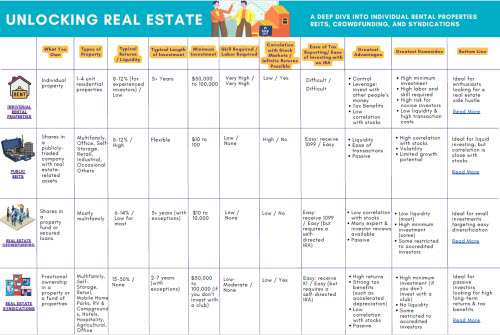
We talk all the time about investing in real estate to reach financial independence and maybe even retire early. But where does the money come from to invest? Unless you’re an heiress or a lottery winner, it comes from your own savings rate.
If your income falls under a certain amount, you could be eligible for a special credit by putting money into qualified retirement accounts. It’s called the saver’s credit, and it started in 2018. Wondering if you qualify? We’ve got all the information you need about the saver’s credit for 2022 tax returns and the 2023 tax year so you can maximize potential tax savings.
But before we dive in, a quick note: if you have specific questions about your taxes, consult with a tax adviser. We’re not tax professionals, so you should always check with a tax expert before you make any big decisions.
What Is the Saver’s Credit?
The saver’s credit is a tax credit that can reduce how much you might owe the IRS come tax return time. Depending on how much you make, you may be able to get a nonrefundable credit for 10%, 20% or 50% of qualified contributions you made to retirement funds within the tax year.
The purpose of the saver’s credit is to provide an incentive for people with lower incomes to save for retirement. The credit only applies up to $2,000 worth of contributions. At the maximum credit percentage of 50%, that’s a $1,000 credit.
How Does the Saver’s Credit Work?
The saver’s credit is nonrefundable. That means it reduces how much you might owe the IRS. If you owe the IRS less than the credit amount, your tax bill is $0. Check out the details below to understand who’s eligible for the credit and how to tell how much your saver’s credit might be.
Who Qualifies for the Saver’s Credit Income Limits
The saver’s credit income limits determine who’s eligible for the credit and at what percent. Some other qualification details apply too. You must be at least 18 years old, not claimed as a dependent on anyone else’s return and not a full-time student.
To qualify for the 2022 saver’s credit, you must make less than $68,000 as a married couple filing jointly, less than $51,000 as head of household or less than $34,000 if you’re filing as any other type. The thresholds go up a bit for the 2023 calendar year. You must make less than $73,000 as a married couple filing jointly, less than $54,750 as head of household or less than $36,500 as a filer of any other type.
These income limits are for receiving any type of saver’s credit at all. The amount of your credit is further defined by income. Saver’s credit amounts are based on adjusted gross income, which is the taxable income reported on your return.
How Much Is the Saver’s Credit?
The saver’s credit is 10%, 20%, or 50% of your contribution to a qualified retirement account up to a certain amount. Check out the tables below to understand what your credit percentage might be for 2022. Find your filing status and adjusted gross income, then look at the bottom row of the column to see the percentage of contributions you can claim.
2022 Tax Year
| Married Filing Jointly | $41,000 or less | $41,001-$44,000 | $44,001-$68,000 | More than $68,000 |
| Head of Household | $30,750 or less | $30,751-$33,000 | $33,001-$51,000 | More than $51,000 |
| Other Filing Types | $20,500 or less | $20,501-$22,000 | $22,011-$34,000 | More than $34,000 |
| 50% | $20% | 10% | 0% |
Source: IRS.gov
To understand how saver’s credit amounts work, consider an example. Sue makes $32,000 per year as a single person. She put $3,000 in her qualified retirement fund. Saver’s credits only take the first $2,000 of contributions into account, so Sue would get a credit of 10% of the $2,000. That’s $200.
In another example, Joe is married. He makes $40,000 and his spouse doesn’t have an income. Joe puts $2,000 in a retirement fund. He would get a credit of 50% of $2,000, which is $1,000.
What Types of Retirement Accounts Qualify?
Only your own contributions are factored into the credit calculation. Match contributions from your employer don’t count. Contributions must also be made to the following account types to qualify:
-
- Traditional or Roth IRA
- 401(k)
- 403(b)
- Governmental 457(b)
- SARSEP
- SIMPLE plan
- Federal Thrift Savings Plan
- 501(c)(18)(D) plan
- An ABLE account for which you are the designated beneficiary
Note that IRAs include self-directed IRAs. If you invest in real estate with a self-directed IRA, any contributions you made count toward the saver’s credit.
Does the Saver’s Tax Credit Increase Your Refund?
The saver’s tax credit doesn’t increase your refund, as it’s a nonrefundable credit. It only reduces the amount you owe in taxes, so it’s not a tool for getting a maximum tax refund. However, if you’re looking for tips on how to maximize your 401(k) benefits, reducing how much you have to pay in taxes is certainly one advantage of those contributions.
For example, if you owe $1,200 and have a saver’s credit of $1,000, you’d only need to pay $200. If you owe $500 and have a saver’s credit of $1,000, you pay nothing, but you don’t get the extra $500 back.
It’s also important to know that the saver’s credit isn’t a tax deduction. It doesn’t reduce the income you’re taxed on.
Manage Finances Well All Year
One of the best ways to minimize your taxes is to manage your finances wisely all year. This is a great way to minimize costs associated with things like interest and help you save money.
The saver’s tax credit is a perfect example of how a high savings rate compounds on itself. By saving more money, you not only get to invest that money for a return, but you also get an extra tax break and save even more money on your tax return.
Consider it one more hidden benefit to the FIRE lifestyle, showing just how much faster you can build wealth when you get intentional about saving and investing.
This article originally appeared on Credit.com and is republished here with the author’s permission.
More on Credit & Financing:
About the Author

Credit.com is the only company of its kind to be founded and run by leading credit experts including journalists, authors and consumer advocates. We’re committed to helping consumers understand and master the confusing world of credit and improve their financial standing by recommending products and actions that are in their best interest.


























I used to qualify for the saver’s tax credit but over the last two years I started earning too much. Good problems I guess, right?
Absolutely Kathy!
Hadn’t heard of this before. I’m nearing the income limit but I think I can still take advantage of this tax credit.
Glad it was helpful Samantha!
Goes to show you that the better you know the rules of the game, the more likely you are to win
No question Jean!
My young apprentice can take advantage of this! Thanks for sharing!
I should have known this when I was starting.
I hear you Chester!